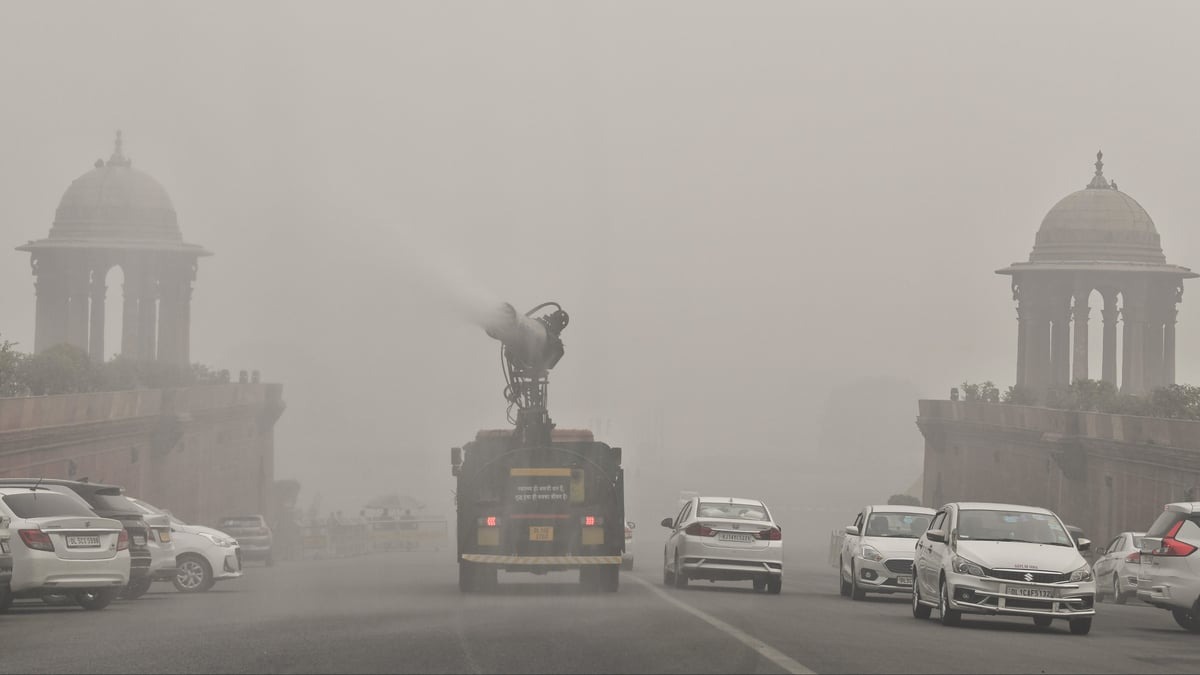
The national capital region woke up to a drizzle on a chilly winter morning as parts of Delhi-NCR received light rainfall. While the rain offered temporary respite from the dust, it failed to address a critical issue plaguing the region—deteriorating air quality. The persistent air pollution has now reached alarming levels, prompting authorities to invoke GRAP Stage 4 (Graded Response Action Plan), the most stringent level of anti-pollution measures.
This article delves into the current weather patterns, air quality concerns, the implications of GRAP 4, and what lies ahead for Delhi-NCR residents as they grapple with worsening environmental conditions.
A Damp Morning in Delhi-NCR
The rain brought a welcome change in Delhi's typically hazy winter mornings, offering a brief moment of clarity amidst the prevailing smog. Areas such as South Delhi, Gurugram, Noida, and Ghaziabad experienced light rainfall. However, meteorologists have warned that while rain can momentarily settle dust particles, it may also lead to an uptick in humidity levels, further trapping pollutants close to the surface.
The drizzle also caused a drop in temperatures, with the minimum temperature hovering around 9–10°C. While residents enjoyed a brief respite from the smoggy skies, experts were quick to caution that rain alone cannot resolve Delhi's deep-rooted air pollution problem.
Air Quality Index: A Cause for Alarm
Despite the rainfall, the Air Quality Index (AQI) in Delhi-NCR remained in the "severe" category, crossing the 400 mark in several areas. This level of pollution is hazardous, especially for vulnerable groups such as children, the elderly, and individuals with pre-existing respiratory or cardiac conditions.
AQI Data Snapshot:
| Area | AQI Level | Category |
|---|---|---|
| Anand Vihar | 470 | Severe |
| Noida | 452 | Severe |
| Gurugram | 435 | Severe |
| RK Puram | 410 | Severe |
The high concentration of PM2.5 and PM10 particles continues to pose significant health risks. Experts have warned that prolonged exposure can lead to respiratory issues, reduced lung function, and cardiovascular complications.
What Is GRAP Stage 4 and Why Has It Been Invoked?
With the AQI slipping into the "severe" category, the Commission for Air Quality Management (CAQM) has implemented GRAP Stage 4, the most stringent set of measures under the Graded Response Action Plan.
GRAP is a pollution control strategy that is activated in phases based on the severity of air pollution. Stage 4, the final stage, is reserved for "emergency" levels of pollution and includes the following measures:
- Construction Ban: All construction and demolition activities are halted, including public and private projects.
- Closure of Industries: Non-essential industrial operations are temporarily shut down.
- Vehicle Restrictions: Strict curbs on the movement of diesel vehicles, especially trucks and heavy commercial vehicles, are imposed.
- Schools and Offices: Educational institutions may consider temporary closures or shifting to online modes of teaching.
- Public Transport: Authorities increase the availability of public transport options to discourage private vehicle use.
The activation of GRAP Stage 4 underscores the urgency of the situation and the need for collective action to curb pollution.
What’s Contributing to Delhi-NCR’s AQI Woes?
The worsening air quality in Delhi-NCR is the result of a combination of factors:
- Stubble Burning: Crop residue burning in neighboring states like Punjab and Haryana continues to contribute significantly to the pollution levels. Despite efforts to curb the practice, the impact remains severe during winter months.
- Vehicular Emissions: Delhi’s high vehicle density, combined with increased use of diesel-powered transport, adds to the pollution burden.
- Weather Patterns: The lack of strong winds prevents pollutants from dispersing, while temperature inversions trap polluted air close to the surface.
- Construction Dust: Despite ongoing restrictions, dust from construction activities remains a major pollutant source.
Public Health Concerns and Precautions
The health implications of prolonged exposure to severe pollution are dire. Respiratory issues such as asthma, bronchitis, and reduced lung capacity are on the rise. Children and the elderly are particularly vulnerable, as their immune systems are less equipped to handle such extreme conditions.
Precautionary Measures for Residents:
- Stay Indoors: Limit outdoor activities, especially for children, elderly, and those with pre-existing conditions.
- Use Air Purifiers: Install HEPA filters or air purifiers at home to improve indoor air quality.
- Wear Masks: High-quality N95 or N99 masks can help reduce exposure to harmful particles.
- Stay Hydrated: Drinking plenty of water helps flush out toxins from the body.
- Monitor AQI Levels: Keep track of air quality through mobile apps or local updates and plan outdoor activities accordingly.
Will Rain Provide Any Relief?
Meteorologists suggest that while rain can temporarily reduce the concentration of pollutants, it is not a long-term solution. In fact, light rain often increases humidity, which can trap particulate matter closer to the ground. Only sustained rainfall, combined with strong winds, can bring significant improvement to air quality.
As of now, no such weather conditions are predicted for Delhi-NCR, and the region will likely have to rely on GRAP measures and public cooperation to combat pollution.
What Lies Ahead for Delhi-NCR?
The implementation of GRAP Stage 4 reflects the severity of Delhi-NCR’s air pollution crisis. However, tackling this issue requires a multi-pronged approach:
- Long-Term Policies: Governments need to enforce stricter regulations on industrial emissions, vehicular pollution, and waste management.
- Promoting Green Energy: A shift to renewable energy sources can significantly reduce pollution from power plants.
- Public Awareness: Educating citizens about their role in reducing pollution—such as carpooling, avoiding stubble burning, and conserving energy—can have a collective impact.
- Infrastructure Investment: Expanding public transportation networks and developing eco-friendly infrastructure is essential for long-term improvement.
Read More: Nitin Gadkari Attended Event with Hamas Chief Hours Before Assassination

 Share
Share



